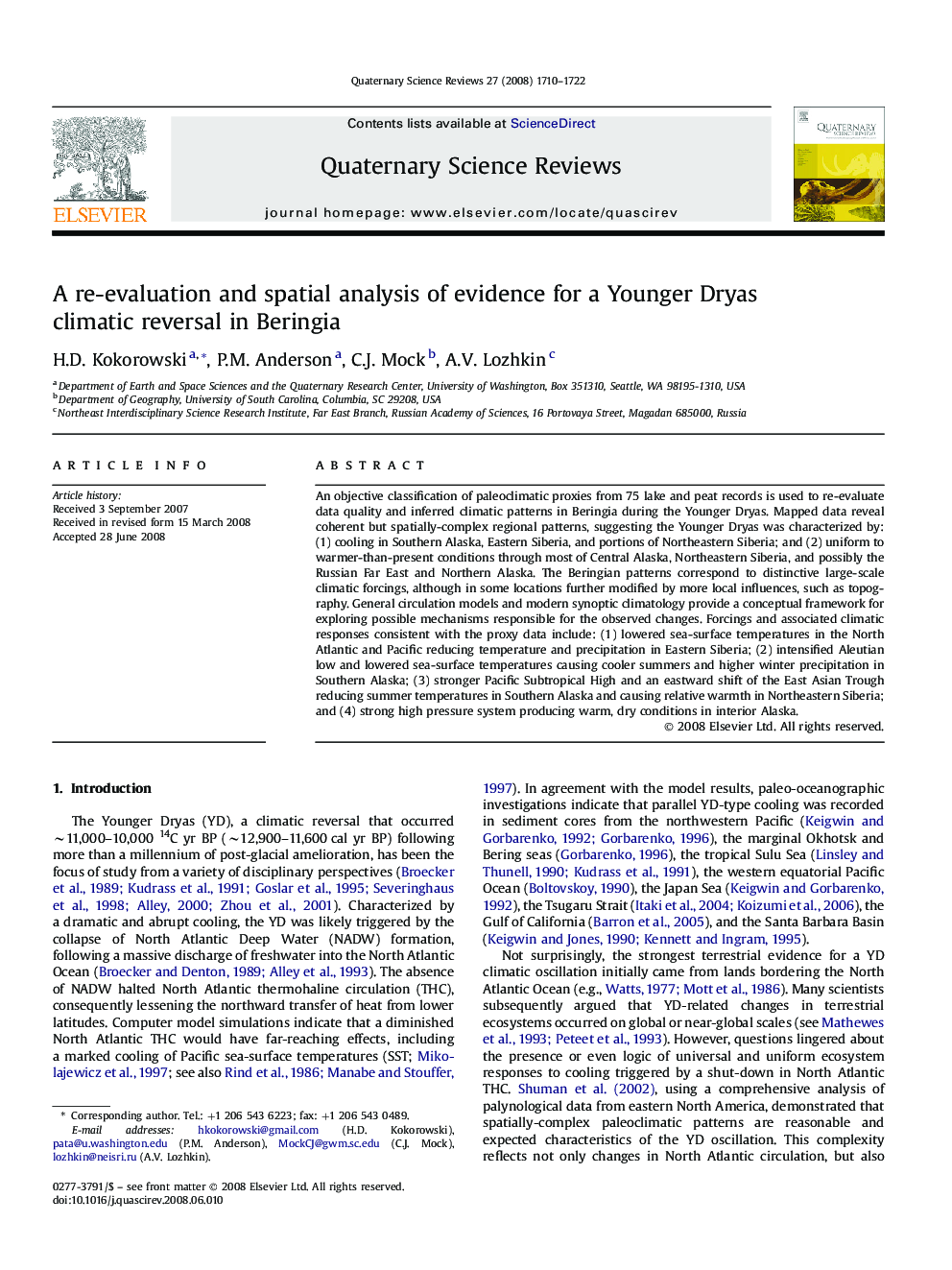| Article ID | Journal | Published Year | Pages | File Type |
|---|---|---|---|---|
| 4736122 | Quaternary Science Reviews | 2008 | 13 Pages |
An objective classification of paleoclimatic proxies from 75 lake and peat records is used to re-evaluate data quality and inferred climatic patterns in Beringia during the Younger Dryas. Mapped data reveal coherent but spatially-complex regional patterns, suggesting the Younger Dryas was characterized by: (1) cooling in Southern Alaska, Eastern Siberia, and portions of Northeastern Siberia; and (2) uniform to warmer-than-present conditions through most of Central Alaska, Northeastern Siberia, and possibly the Russian Far East and Northern Alaska. The Beringian patterns correspond to distinctive large-scale climatic forcings, although in some locations further modified by more local influences, such as topography. General circulation models and modern synoptic climatology provide a conceptual framework for exploring possible mechanisms responsible for the observed changes. Forcings and associated climatic responses consistent with the proxy data include: (1) lowered sea-surface temperatures in the North Atlantic and Pacific reducing temperature and precipitation in Eastern Siberia; (2) intensified Aleutian low and lowered sea-surface temperatures causing cooler summers and higher winter precipitation in Southern Alaska; (3) stronger Pacific Subtropical High and an eastward shift of the East Asian Trough reducing summer temperatures in Southern Alaska and causing relative warmth in Northeastern Siberia; and (4) strong high pressure system producing warm, dry conditions in interior Alaska.
